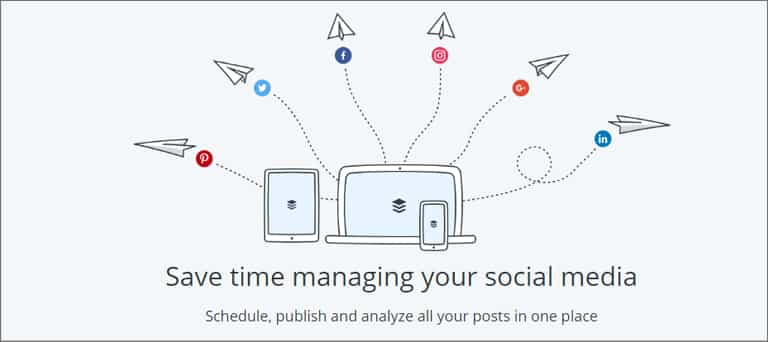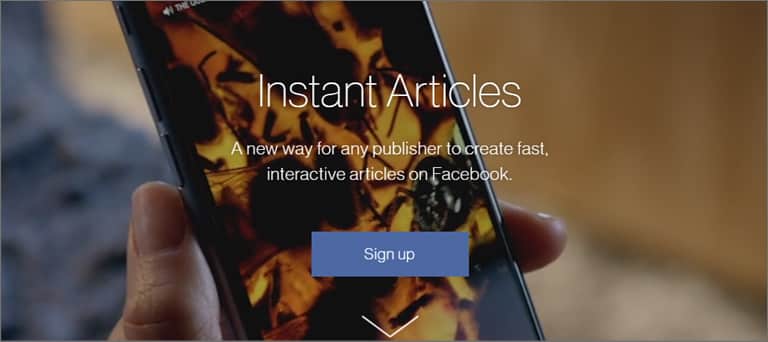
There’s no doubt that social media plays an important role in building a successful brand. On average, Internet users have almost three separate and active social media accounts.
That’s a lot of potential sharing and likes for brands, especially when you consider there are more than three billion Internet users across the globe.
So, how does one get into this wide market and become more “likeable” in sites like Facebook and Twitter? By giving people what they want. In some ways, you can consider this a form of customer service. It’s all about delivering a good experience to your patrons.
Below are my 16 social media branding tips that will affect how others view your business. From promoting a simple blog to marketing products and services, everything is relevant in a social media branding strategy.
Tip #1: Add the Human Element
There is such a thing as being too clinical in writing posts. Whether it’s content on a website or updates to Facebook, there is a need for that “human” element.
Material you create should feel more conversational, like a friend telling another a fact-based piece of information.
Here are a few ways you can give a sense of the human element:
- Add personality to your writing.
- Use shorter sentences.
- Don’t over-fill your content with long words.
- Add humor to pieces when the mood calls for it.
- Be clear and concise.
- View the project more like you’re giving advice rather than relaying facts.
You don’t want your content to read like an electronics manual. By being conversational, the brand seems more approachable.
Tip #2: Discover Trends in Your Niche
Keeping an eye on trends and engaging keeps the brand relevant. It also helps prevent looking obsolete.
For instance, you don’t see Microsoft pushing comments regarding Windows 95. I know this is an extreme comparison, but you get the point.
Tools like BuzzSumo help developers such as yourself stay in the loop when things unfold online. Not only does it show you popular pieces of content, but it will also show you how often those materials are shared on social media.

A lot of people will add website marketing tools like these to their social media branding strategy to help develop content on their websites.
Tip #3: Understand Your Audience
Knowing your target demographic is a vital component to being engaging. Some brands excel at creating clinical pieces without being interpersonal because that is the audience the companies are targeting.
And knowing your audience increases the chances of creating viral content. It’s all about posting something that resonates within those who follow your social profiles.
Unfortunately, it’s nearly impossible to make everyone happy at all times. However, there are things you can do that reduce the risk of alienating certain followers and fans.
For example, political and religious comments can easily create a public mine field for negative backlash. That is, unless they are relevant to your niche.
Understanding your target audience helps you create posts that will engage a person. Getting as much data as possible about whom you are targeting should be a priority.
Tip #4: Stick to Content Schedules
Maintaining a schedule for posting content on both the website and social media can boost being “liked” more often. This involves finding those peak times where people are the most engaged regarding your niche or industry.
You don’t see many ice cream carts traveling the streets of Denver in the middle of winter.
It’s all about timing.

According to averages, the best time to post on Facebook is between 1:00pm and 4:00pm on Thursdays and Fridays. However, this can be skewed depending on your industry.
One of the best ways to find your specific golden times is to run your own tests while keeping track of the data.
Tip #5: Use Mentions and Hashtags
Social posts on Instagram with at least one hashtag have more than 12% higher engagement than without. Essentially, hashtags are kind of like keywords for the social media world.
Simply adding one will put your content among others that are in the same conversation.
Mentions are also a good way to get the attention of specific people or businesses. In many cases, this results in others responding in kind which may impact the visibility of your post.
It may also prompt the person or company to share your post with their own followers, especially if it’s something interesting or engaging.
The right social media marketing tools can help you find the perfect hashtags relevant to your niche. This is key if you want your posts to make sense when connecting with those readers.
Tip #6: Create “Likeable” Content
Likeable content has a few different aspects to it. There is creating a post on your site that is interesting and of high quality, then there is the title itself. Tools like CoSchedule Headline Analyzer will help you determine if your title ranks well against global interests.

Creating evergreen content is also a valuable asset because it can be used over and over again. This type of article is based on information that is less likely to change with the passage of time. In reality, you can share the same article two years from now and it will still be relevant.
Video material is another format that scores well when considering the engagement of your audience. In 2015, as many as 18% of people shared video content weekly with others on social media.
Think about it. How often do you see videos in your Facebook or Twitter feed?
Tip #7: Share More than Your Own Content
While it’s important to share your content, that’s not the only part of engaging your audience. It’s also a good idea to share other relevant content as well. You don’t want to share the material from your direct competition.
However, highlighting other websites or tools that your audience might be interested in could prove helpful.
Here’s an example. If you have a retail store, it might be prudent to share posts regarding the brands you carry. Perhaps a blogger wrote an article regarding new ways to use your products. It’s informative bits like these which will keep fans engaged and inspire clicking the “like” button.
Tip #8: Use the Right Tools for Sharing
Creating “likeable” content is good, but you need a way to distribute the material to the masses. While you could log into each of your social accounts one at a time, it’s much easier to use online tools.
For instance, Buffer connects to major sites like Facebook and Twitter allowing you to share your content with your accounts in a single click of the mouse.

The more people who see your post, the better are your chances of someone liking the content.
Sharing tools help you connect with thousands of people spanning multiple platforms simultaneously.
Tip #9: Optimize the Website for Social Media
An excellent method for getting more people to interact with your content is by optimizing the site for social media. Things like Twitter cards and Facebook streamline the content for delivery on these platforms.
For instance, I know a lot of people who use Facebook Instant Articles to make the content more appealing for the popular social hub. Additions like this simply make sharing and liking content much easier.

Twitter cards are used when someone posts your link in the social site. This automatic feature includes information regarding your website and is added to the message instantly.
All it requires is a bit of coding on your site or through plugins for those who use WordPress.
Tip #10: Avoid Being too Salesy
When creating posts, avoid being too “salesy” in your content. You want to promote the brand without it seeming like an advertisement. It’s OK to mention your products and services in passing, but focusing too intently on the goods often doesn’t do well for being “Liked.”
For example, let’s say that you sell desserts. Instead of a social media post of a blueberry-filled pastry with a price tag, you could add the comment of how good it tastes or something like, “Don’t you wish you had one right now?”
Be creative while promoting the brand. Approaching posts in an imaginative way often gets liked and shared more often than just basic pictures and information.
Tip #11: Prompt Visitor Interaction
One of the most effective methods of inspiring interaction is the “call to action.” This could be anything from a sentence stating “act now” to “what do you think?”
The purpose behind the CTA is to get the ball rolling for conversation or interaction of some kind. These are most often found on landing pages.
Many developers find it effective to mention clicking a like button at the end of content. This style of call to action is used in blog posts, videos and even podcasts to further engage the audience.
Calls to action are a reminder to those who find value in the material to show appreciation by telling everyone he or she enjoyed it.
Tip #12: Engage Your Audience
One of the more important social media branding tips I can give you is to engage your audience. It’s one thing to have your content shared or liked, but it’s more potent if you interact with fans and followers.

If someone shares or mentions your brand, make sure he or she knows you saw the comment. Perhaps you can respond to questions or other requests. Remember, it’s all about giving people a sense of interacting with the brand.
It makes them feel important and that their voices are heard regardless of how large the company is.
Tip #13: Meet Negative Comments Head-on
Some people would rather avoid negative comments on social media. However, this isn’t always the best method to deal with a problem. After all, social engagement is part of customer service.
If someone has a problem or responds poorly to a social post, meet it with professionalism and respect.
Addressing problems in a public forum not only helps relieve tension with the negative person, but it also shows others your willingness to help.
This contributes to boosting the brand’s reputation online and increases the likelihood of content being “likeable.”
The last thing you want is to publicly argue with someone over social media. The content could go viral, but not in a good way.
Tip #14: Make Sharing and Liking Easier
You want sharing and liking to be as easy as possible to those who visit your website or social profiles. This means adding things like social buttons on posts or including the like button at the end of your content.
If it’s something easy to click, many people often do so because the button is there.

Take videos on YouTube for example. At the end of the show, the creator will ask people to “Like and Subscribe.” This is a call to action. However, many of them will also include big clickable links on the video itself even though there are buttons under the video to do so.
Tip #15: Use Images in Social Posts
Images in social posts play an important role when it comes to sharing and liking. In fact, people reading posts with images are 55% more likely to retain the information a few days later. This is one of the reasons why your Facebook feed is constantly filled with photos and memes.
Images are a great way to market a brand. For example, a lot of restaurants will take to Instagram to show off cooked food while using hashtags and words to get the mouth salivating.
This is because humans are, for the most part, a visual species. What we see plays a role in our behavior.

Tip #16: Share Insights Regard the Brand
Lastly, a lot of businesses have experienced a great deal of success by adding a company history to a social media branding strategy.
This kind of material connects with readers and makes them feel informed. It improves overall relationships and has potential to boost the online reputation of the brand.
You don’t have to go into personal details or share anything that is too confidential to inspire interaction. Perhaps elements of the business that are essentially public knowledge but not widely known will inspire fans and followers.
Connecting With Your Audience
Today, most visitors want to have that interpersonal connection with a brand. The more they experience that interaction, the more they trust and share the experience. The social media branding tips above are only the beginning.
It’s up to you to develop the content that keep the masses engaged and coming back for more.
